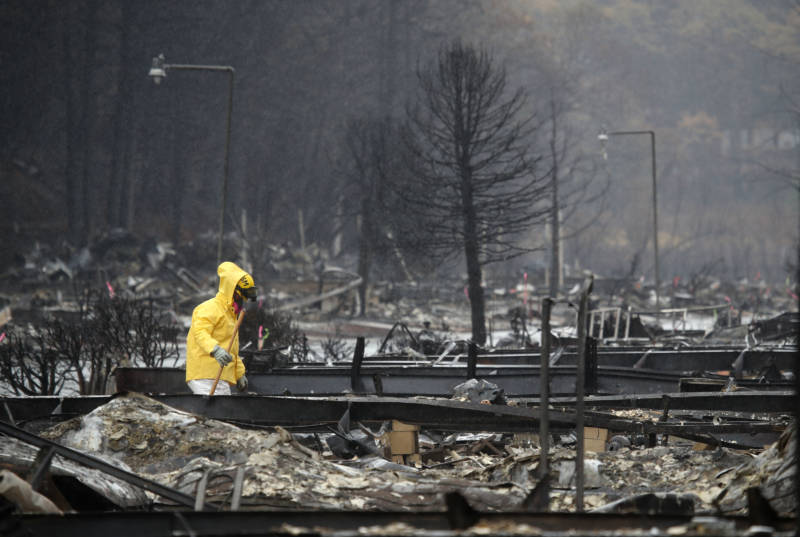"It is important to note that California faces a massive backlog of forest management work," the reports says. "Millions of acres are in need of treatment, and this work, once completed, must be repeated over the years. ... While fuels treatment such as forest thinning and creation of fire breaks can help reduce fire severity, wind-driven wildfire events that destroy lives and property will very likely still occur."
Gov. Gavin Newsom issued an executive order on Jan. 8, his first full day in office, for the agency to produce a list of recommendations for the "most impactful" steps he might take "to prevent and mitigate wildfires to the greatest extent possible.”
Cal Fire's response leads off with a list of 35 "priority" fuel reduction projects that have already been identified by the agency's regional units and can be launched now "to help reduce public safety risk for over 200 communities" statewide. The projects involve removing dead trees, clearing or thinning vegetation, and creating travel corridors for firefighters and residents along densely wooded roads.
The list of priority projects includes several in the immediate Bay Area. Among them:
- A 1,760-acre project to create shaded fuel breaks in the hills north and west of Orinda (a shaded fuel break is one that clears brush and lower branches from trees while leaving the trees themselves in place, part of a strategy to prevent fires from spreading through the crowns of trees).
- A 467-acre project to create a shaded fuel break for 100 feet on each side of Kings Mountain Road in parkland above Woodside, in southern San Mateo County.
- A 454-acre project to create a shaded fuel break along Highway 17 between Lexington Reservoir and the Santa Cruz County line.
- A 250-acre project at Quarry County Park in El Granada that aims to cut back a major stand of eucalyptus.
The priority fuel reduction projects also includes two large swaths of territory near inland towns in Mendocino County: 26,500 acres around Ukiah and nearly 12,000 acres around Willits.
The report also recommends 13 medium- and long-term steps to reduce the risk of big, destructive fires throughout the state. Those include coordinating with air-quality agencies to allow more widespread use of prescribed burns; taking steps to develop the work force needed for future fuel reduction and forestry work; and studying changes in state forestry law needed to restore the health of the state's woodlands.
Newsom's order and the Cal Fire report come after a two-year period in which more than 3 million of California's roughly 100 million-acre land area burned. Those blazes include last summer's Mendocino Complex Fire, which charred about 459,000 acres -- about 15 times the area of San Francisco -- and became the biggest wildland fire in state history.
More than 140 people have died in wildfires over the previous two fire seasons, including 85 last November in the Camp Fire in Butte County. That blaze also destroyed nearly 14,000 homes, making it California's deadliest and most destructive wildfire.
